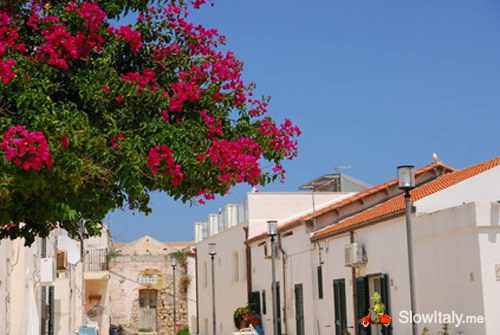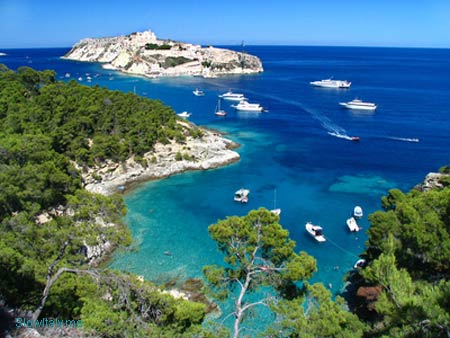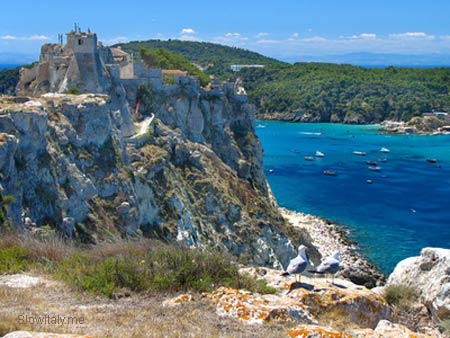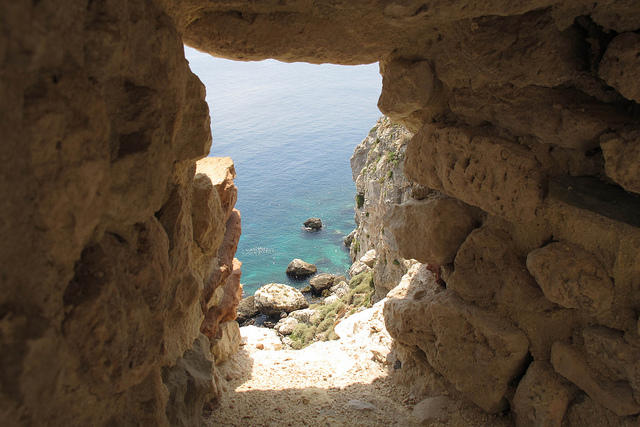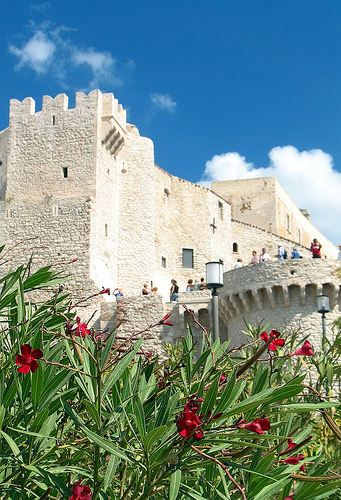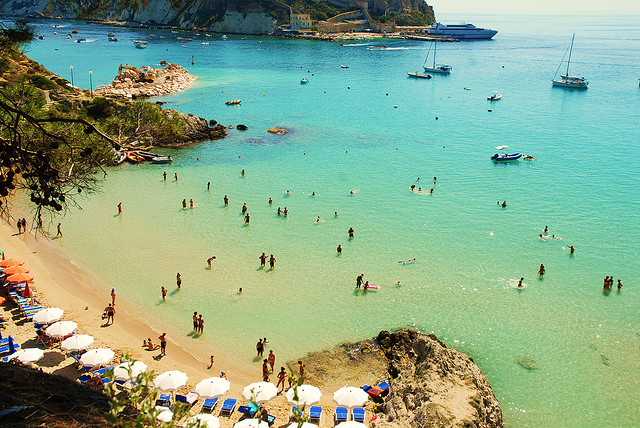Tremiti islands: an idyllic archipelago in the Adriatic
(updated April 2014)
Well known for their crystal-clear waters and pleasantly mild climate, the Tremiti islands offer a beautiful escape away from the crowded beaches and touristy resorts of the Adriatic coast. Located off the Gargano peninsula (the ‘spur‘ of Italy‘s ‘boot‘), they are the only archipelago in the Adriatic Sea.
The archipelago, which consists of three small islands: San Domino, San Nicola and Caprara (also known as Capraia) and two uninhabited rocks Creataccio and Pianosa, was designated Marine Protected Area in 1989. It has been part of the Gargano National Park since 1996. The three islands together are less than 5 square kilometres, and a comune of their own, within the province of Foggia and the Puglia region.
San Domino
The largest island, San Domino is named after the eponymous Saint. It is a beautiful island, covered with a lush vegetation of fragrant pine woods and the so-called maquis, a dense underbrush made of junipers, rosemary, myrtle, mastic shrubs and centaurea diomedea, the cornflower of the Tremiti islands.
With its hotels, restaurants and a few small shops it is the most developed for tourists, but remember that this is really a tiny island, so don‘t expect too much. There are some good trattorias and excellent fish restaurants, though. Overall, the Tremiti Islands are really a place to swim (or dive), wine and dine. No car is needed, as the island is only 2.6 km large and can be crossed walking from one cape to the other in no-time.
We recommend to take a boat trip round the island of San Domino to discover the wild beauty of its indented coast. Divers will appreciate the archipelago’s underwater caves and coral reefs.
San Nicola
Only separated by a stretch of sea from San Domino, San Nicola is the smallest and also the most populated of the Tremiti islands. It is the seat of the Town Hall of the comune and also boasts a fortress and Benedictine abbey Santa Maria a Mare, which Pope Gregory XII had built on San Nicola in order to protect the little archipelago against pirates and other invaders.

The abbey was later enlarged by Benedictine monks and fortified by Charles II of Anjou, who left his name to the Angevin tower. The Cathedral of Santa Maria a Mare was consecrated in 1045 and hosts a mosaic dating back to the roman-Byzantine era. Later the abbey became a penal colony of the Bourbons. Like Ponza and other small islands in the Mediterranean, San Domino and San Nicola were used as penal colonies during Benito Mussolini’s Fascist regime.
Caprara
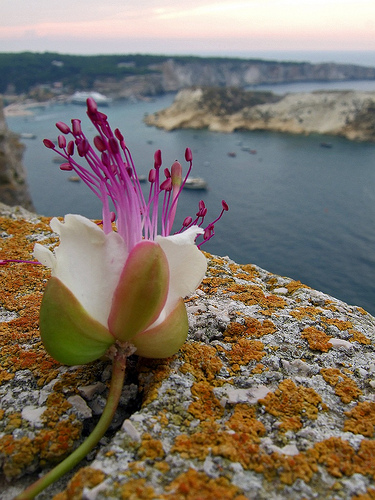
Caprara, once called “Capperaia” due to the abundance of caper bushes that still grow there, is bare and uninhabited, while Pianosa is much further out in the Adriatic. The caper bush is best known for the edible flower buds (capers), often used as a seasoning. Caprara is famous for its Cala dei Turchi, the bay where the Turks retreated and hid before attacking the fortress of San Nicola. Scoglio della Cernia, is another natual sight, where the fish of the same name take refuge.
Other beautiful bays of the archipelago include Cala degli Inglesi, Cala Matano, Cala Tramontana, Cala degli Schiavoni, and Cala delle Arene (the archipelago’s only sandy beach).
The many caves, such as Grotta delle Viole, Grotta del Ferraio, Grotta del Bue Marino near the lighthouse and Grotta del Sale, where smugglers are believed to have hidden salt supplies, are also worth a mention.
On August 15-16 there is a procession at sea celebrating the comune‘s patron saint.
Another fascinating aspect of the archipelago are the many legends attached to this place.
In ancient times the islands were known as Insulae Diomedae, in memory of the ancient Greek hero who was supposedly buried there. Legend has it that the three main islands were created from three giant rocks brought back from Troy and thrown into the sea by Diomede. The numerous Cory’s sheawaters present on the islands are said to be Diomede’s companions, changed into birds by the goddess Aphrodite. The typical sound of the bird resembles that of a human crying and is believed to represent Diomede’s companions mourning their hero.
Ferries, motorboats and hovercrafts to San Domino leave from Pescara, Ortona, Vasto, Termoli, Manfredonia, Vieste, Peschici e Rodi Garganico. The ferry crossing from Termoli takes 1h40, hovercraft crossing between 40min and 1h.
For info and bookings:
Navigazione Libera del Golfo
Società Tirrenia Navigazione
Consorzio Marittimo delle Tremiti: Tel. 333.5832718
There is also a daily Helibus service to reach San Domino from Foggia or Vieste by helicopter. Price is about 50 Euro per person in high season, and about half this price in low season. For time tables and exact pricing see, www.alidauna.it.
Photos credits (top to bottom): San Nicola © cenz07/Fotolia.com; Vaclav Janousek/Fotolia (2, 3); San Niola first photo Silvione; David_Salvatori (3, 6), gengish (4, 5), Luigiantonio72; Tremiti islands beach by Luigiantonio72.


